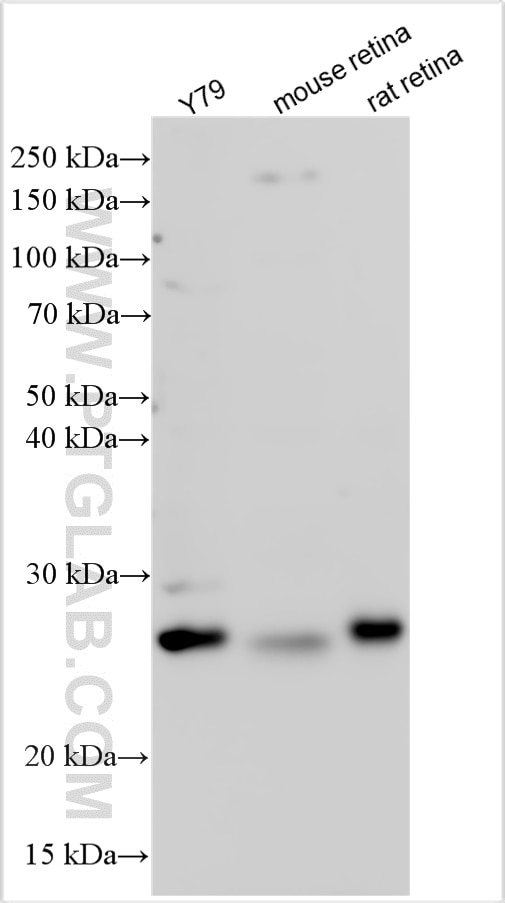Validation Data Gallery
Tested Applications
| Positive WB detected in | mouse retina tissue, Y79 cells, rat retina tiissue |
Recommended dilution
| Application | Dilution |
|---|---|
| Western Blot (WB) | WB : 1:500-1:2000 |
| It is recommended that this reagent should be titrated in each testing system to obtain optimal results. | |
| Sample-dependent, Check data in validation data gallery. | |
Product Information
15267-1-AP targets ARL4D in WB, ELISA applications and shows reactivity with human, mouse, rat samples.
| Tested Reactivity | human, mouse, rat |
| Host / Isotype | Rabbit / IgG |
| Class | Polyclonal |
| Type | Antibody |
| Immunogen | ARL4D fusion protein Ag7369 相同性解析による交差性が予測される生物種 |
| Full Name | ADP-ribosylation factor-like 4D |
| Calculated molecular weight | 22 kDa |
| Observed molecular weight | 25-27 kDa |
| GenBank accession number | BC000043 |
| Gene Symbol | ARL4D |
| Gene ID (NCBI) | 379 |
| RRID | AB_3669203 |
| Conjugate | Unconjugated |
| Form | Liquid |
| Purification Method | Antigen affinity purification |
| UNIPROT ID | P49703 |
| Storage Buffer | PBS with 0.02% sodium azide and 50% glycerol , pH 7.3 |
| Storage Conditions | Store at -20°C. Stable for one year after shipment. Aliquoting is unnecessary for -20oC storage. |
Background Information
ARL4D (ADP-ribosylation factor-like protein 4D) is also named as ARF4L. ARL4D is a developmentally regulated member of the ADP-ribosylation factor/ARF-like protein (ARF/ARL) family of Ras-related GTPases. ARL4D interacts with the C-terminal pleckstrin homology (PH) and polybasic c domains of cytohesin-2/ARNO in a GTP-dependent manner. Localization of ARL4D at the plasma membrane is GTP- and N-terminal myristoylation-dependent. ARL4D(Q80L), a putative active form of ARL4D, induced accumulation of cytohesin-2/ARNO at the plasma membrane (PMID: 17804820).
Protocols
| Product Specific Protocols | |
|---|---|
| WB protocol for ARL4D antibody 15267-1-AP | Download protocol |
| Standard Protocols | |
|---|---|
| Click here to view our Standard Protocols |
